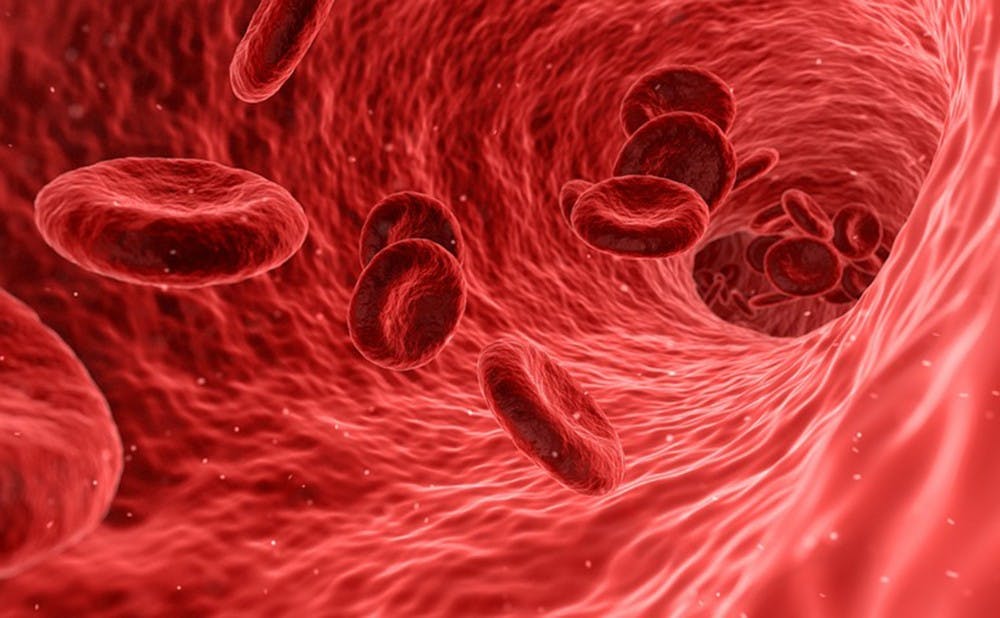Duke scientists have developed working human muscle tissue from stem cells, edging closer to creating more personalized therapies for disease.
The researchers—led by Nenad Bursac, professor of biomedical engineering—converted pluripotent stem cells, which are a class of cells that can be induced into almost any cell type in the body, to muscle tissue using a carefully coordinated chemical system.
Induced pluripotent stem cells are converted by capturing existing cells from a person and regressing them back into a more immature state through biochemical means. Since the iPS cells are genetically identical to the cells of the patient that they come from, researchers can use them to recreate a patient’s disease tissue outside the body, explained Lingjun Rao, a postdoctoral scholar in Bursac’s laboratory and first author of the study.
"There are different types of muscular diseases," Rao said. "With [induced pluripotent stem cells], we can take skin cells and then convert them into iPS cells, and then convert them into muscle."
Historically, diseases such as muscular dystrophy have been difficult to study, since it has not previously been possible to grow and maintain functional muscle tissue in the laboratory. Although Bursac and his team are still fine-tuning their platform, they are excited by the possibility of studying muscle diseases with a model that could be subjected to function and drug-targeting tests for research.
With the new functional muscle platform, researchers could one day tailor therapies for patients by recreating their diseased muscles and testing them against different drug candidates, Bursac explained.
"Being able to study these muscles in 2-D or 3-D culture systems show [functional] features of diseases," he said. "And so in this moment we are having a development of disease models for different genetic diseases, and then trying to test some drugs or chemicals and compounds or even gene therapies that could be able to correct or halt the disease."
iPS cells have been studied alongside embryonic stem cells in prior research. However, scientists have largely moved away from using the latter because of ethical concerns. In addition, Bursac noted, embryonic stem cells cannot provide the same level of precision and consistency when used for study since they come from embryos unrelated to patients.
Because iPS-derived muscle cells are genetically indistinguishable from other cells in the body, it might one day be possible to transplant lab-grown muscles into patients without concern of triggering an immune response. However, the promise of stem cell therapies is still far off from a technical standpoint, Bursac noted.
"The reason for that is because there has been the possibility that iPS technologies may not be safe to use in humans," he said. "Because if the cells were not completely regenerative they may be [more prone to malfunction]. It does not mean that [stem cell therapies] won't happen. It just means that it will probably take much longer than what we might expect."
Bursac added that although there are several ongoing clinical trials and experiments that have suggested that iPS cells are generally safe, current implementations of their underlying technology—such as his lab's muscle tissue platform—are not yet equivalent to what would be required to even begin considering transplants.
Human muscle tissue works through electrical stimulation, after which it contracts. The muscles that Bursac and his team have developed thus far, however, more closely resemble fetal tissue than adult in terms of their contractile strength.
Still, the muscles that they have produced are far more functional than previous efforts. The key to the team's success, Rao said, was how they cultured, or incubated, the iPS cells from beginning to end.
Muscle cells do not develop alone, he explained. Instead, they are attached to an extracellular matrix, which provides nutrients to growing muscles and contributes to their organizational stability.
Previously, researchers had cultured iPS-derived muscle in a 2-D system, but this often proved problematic because the extracellular matrix and muscle cells would separate as time passed. However, culturing the cells in a 3-D system allowed for more mobility.
"During muscle development, immature [muscle fibers] spontaneously twitch, which helps to achieve fusion and maturation," Rao said. "So what we found is that during [the differentiation of iPS cells], when cells start to fuse, they will contract, and sometimes they will pull themselves off from the extracellular matrix. And in that case you cannot keep them very long in culture—you can keep them for maybe 10 days."
To implement their idea for the 3-D culture system, the team had to experiment with various chemical conditions and timing patterns to achieve the right balance for proper maturation.
"But in a 3-D system, even if they are contracting, the extracellular matrix can move with them. So we can keep the cells intact," Rao said. "So in our system we can culture them for as long as five weeks."
The specificity required to produce their muscle means that the insights that they derived from tinkering with the 3-D culture system will likely not be useful for other cells, such as those in the liver or brain.
Nonetheless, other members of Bursac's lab have made progress in transforming iPS cells into other functional tissue types. In November, Bursac and his team published a paper in which they converted iPS cells into a heart patch, which was just as strong and sensitive as normal adult heart muscle.
Although the muscle tissue that they developed is immature and weak, Rao said he is conducting experiments to accelerate its maturation so that their lab-grown product might one day be just as functional as adult muscle.
But achieving this goal is particularly challenging since muscle maturation takes place across several months from embryo to birth and onward—far longer than the five weeks during which iPS-derived muscles are cultured.
"There are struggles about that because this is human biology, and in the human development everything happens slowly relative, for example, to mouse development," Bursac said.
Get The Chronicle straight to your inbox
Signup for our weekly newsletter. Cancel at any time.

